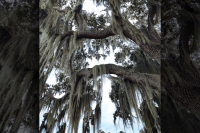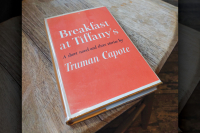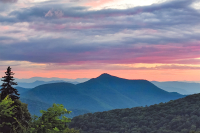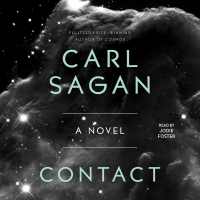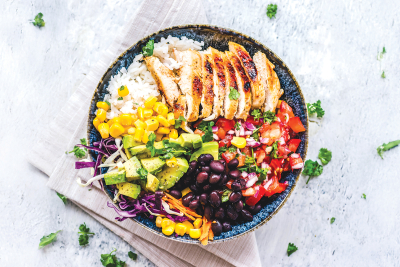South Main makeover: Let the brainstorming begin
When new bikers show up for his weekly ride in Waynesville, Cecil Yount pulls out all the stops: a riveting trip through town to Super Wal-Mart and back.
While lacking in scenery, Yount is sending a message to the cyclists — look how easy it is to bike to the store.
Yount’s regular jaunts down South Main Street give him a rare insight on traffic, one he hopes to impart as the town crafts a vision for a South Main makeover. Namely, Yount doesn’t think the street needs to be much wider than it already is.
“I have yet to see the need for four lanes of traffic,” Yount said. “There have been fairly minimal times I have spent sitting waiting on a light. I just don’t see it.”
Yount, the chair of Bicycle Haywood NC, plans to be front and center at a road design workshop next Tuesday when the town will collect input on South Main from the community.
Perhaps it’s no surprise a cyclist wants a quainter road, one with slower traffic, wide sidewalks, shady trees, and not as many lanes for cars.
But even development interests aren’t necessarily clamoring for more lanes, even though South Main sports the ultimate magnet for commercial sprawl. Property owners raced to put their lots on the market when Super Wal-Mart came to town three years ago. They are still waiting for the boon, although real estate experts claim it will come to fruition sooner or later and has merely been sidelined by the recession.
Brian Noland, a Realtor with RE/MAX Mountain Realty, represents half a dozen sellers marketing their property for commercial development along South Main. His office sits on South Main, making Noland another authority when it comes to sizing up traffic needs on the road.
His verdict: three lanes would do nicely, perhaps even with roundabouts instead of the standard stoplights.
When asked whether South Main seems congested, Noland paused, then answered, “I don’t think it is.”
To be sure, he wheeled around and asked his coworkers in the office. Not congested, they concurred.
Noland believes South Main will eventually be home to a row of fast-food restaurants, drug stores and retail. But he wants to keep “our hometown image.”
But Noland is also trying to protect the lots he’s marketing. More lanes will eat into the property fronting South Main and make the lots harder to develop, he said.
That’s also why he’s a fan of roundabouts. Traffic lights equal turn lanes for stacks of cars to pile up while waiting for their signal. Those turn lanes add to the road’s width and encroach on precious commercial lots.
Roundabouts, on the other hand, keep traffic moving and don’t need turn lanes for cars to queue up in, Noland said.
Waynesville has two roundabouts, which were initially met with skepticism but in practice have been well received.
“I didn’t like them immediately when I moved here because they were new, but they really move the traffic through,” Noland said.
Road designers with the N.C. Department of Transportation are conducting their own feasibility study of South Main concurrently with the town, and have proposed a large four-lane road with a center median.
“I think everyone has been assuming that is what will happen there, that it will be four lanes,” said Paul Benson, Waynesville’s town planner.
But Benson said the DOT plan is too big and too wide for the town’s tastes. Town leaders want a more tailored vision, designed in keeping with smart growth principles and walkable community ideals.
“DOT strictly stuck with just a road and trying to get people through the area as fast as efficiently as they could,” said Mark Teague, a private traffic engineer consultant in Waynesville.
That’s largely what led the town to pursue a feasibility study of its own. The independent feasibility study will cost $55,000, with 80 percent of the cost paid for with a federal planning grant.
Yount is pleased the town is rejecting the DOT’s feasibility study and doing one of its own.
“I think the DOT study is going to do nothing more than create another Russ Avenue and that’s the last thing this town needs,” Yount said. “The philosophy needs to change from ‘Let’s move cars as quickly as we can’ to ‘Let’s have smart transportation alternatives and livable streets.’ We may need to de-emphasize moving a single car from one point to another.”
To most, anything will be better than the status quo. South Main doesn’t exactly look the part of a booming commercial district. It is pockmarked by boarded-up windows, weed-engulfed parking lots, cracked pavement — even concertina wire around one windowless cinder block building.
“That is not what Waynesville is all about,” said Ron Reid, the owner of Andon-Reid Bed and Breakfast. “That corridor just needs help. It needs to be cleaned up.”
Reid winces to think about tourists coming to Waynesville for the first time via South Main.
Reid, also a member of the town’s planning board, wants the usual pedestrian-friendly features of street trees, sidewalks, perhaps a planted median.
“I really envision something halfway between what Russ Avenue is and what our downtown district is,” Reid said.
Bull by the horns
Fred Baker, the town’s public works director, said the DOT’s feasibility study doesn’t live up to the town’s design standards.
For example, the town requires a row of street trees in between the sidewalk and road, while the DOT plan puts the trees on the far side of the sidewalk. The rationale: so swerving cars don’t run into the trees. But surely that’s better than hitting pedestrians, Baker said.
It might seem like a small detail, but whether street trees go between the sidewalk and road rather than the far side of the sidewalk speaks volumes to the road’s character.
“It gives you that sense of security on the sidewalk that you could relax,” Baker said.
There’s several points like this where the DOT’s proposed design diverges from the town’s street standards.
Waynesville’s standards call for bike lanes, but the DOT left them out, instead making the outside car lane a couple of feet wider so bicycles can “share the road.”
Another incongruity: Waynesville’s standards call for ?-feet-wide sidewalk but the DOT’s plan called for only ? feet.
Baker said he will lobby hard for the town’s higher standards.
But the DOT may ask the town to foot the bill for these as perks. When the town wanted a multi-use path included in the widening of Howell Mill Road a few years ago, hoping to fill in a missing gap of the Richland Creek greenway, the DOT told the town it would have to pick up the tab for the extra right-of-way required for a multiuse path. It was half a million the town didn’t have, Baker said.
“Ultimately when DOT starts buying right-of-way, it charges the town for the extra width for all these things,” Baker said.
Baker hopes that will change by the time a South Main makeover becomes a reality, citing the complete streets movement that is infiltrating the DOT.
More lanes will make it harder to also squeeze in the town’s desired bike lanes, wider sidewalks, a planting strip with street trees
“It would be nice if we could get away with three lanes,” Benson said.
All in the numbers
But ultimately, whatever plan the town comes up with will need DOT buy-in, since the DOT holds the road-building purse strings.
DOT will have to be convinced that the road is wide enough to handle projected traffic, Benson said. Benson is anxious to get a look at the latest traffic counts for South Main, being conducted as part of the town’s process.
Those traffic counts — data on not just the number of cars moving along the road, but also where they are turning in and out — will be used to predict future traffic, which in turn will make or break the number of lanes.
Mark Teague, a traffic engineer consultant who used to work for the DOT, has been conducting counts up and the down the road for weeks in preparation for the public design workshop next week.
The real heavy lifting, however, will be coming up with a road design that amalgamates everyone’s visions.
“We are serving a lot of different groups, the residents who live and work on the road, the people who drive on it, bikes and pedestrians. We have a lot of different groups of people who are unrelated,” Teague said. “It is a balance.”
Share your vision
A community brainstorming session to gather ideas and visions for South Main Street in Waynesville will be held on Tuesday, Sept. 20.
“Residents all throughout Waynesville use this space,” said Rodney Porter, a consultant with La Quatra Bonci, facilitating the town’s new street plan for South Main. “When the public is in charge of what they want to see their roads look like, the outcome is a little bit better.”
Drop in anytime between 10 a.m. and 2 p.m. to explore maps and road images and offer comments during an open charette-style planning session. Porter will give a presentation on the project starting at 8:30 a.m., and at 9:30 a.m. there will be a design workshop to kick off the charette session.
Held at the West Waynesville Campus of Haywood Community College on South Main (the old Dayco Union Hall across the street from the Verizon Wireless store.)
828.456.2004 or This email address is being protected from spambots. You need JavaScript enabled to view it..
Waynesville primed for makeover of South Main
Waynesville has one chance to get South Main Street right, or live with the consequences for decades to come. And the town isn’t taking any chances. The N.C. Department of Transportation had barely gotten started on a feasibility study for a street makeover when the town began hunting for grants to do its own independent yet simultaneous feasibility study.
The community has to speak up on the front end to let DOT know what it wants, said Mayor Gavin Brown.
“There is a default button over there and they will hit it,” Brown said. “That’s what I want to avoid. I want to make sure we have input into the process when DOT finally gets around to doing something.”
There’s a lot riding on a South Main makeover. It will dictate what Waynesville’s west side becomes. Will West Waynesville become the next West Asheville, transforming into a hip walkable community, albeit three decades from now? Or will it follow in the footsteps of Russ Avenue, a high-traffic commercial hotbed?
“We want to create a place that is a destination — a place that can be called a place and not just a street or a bypass,” said Rodney Porter, a consultant hired by the town to steer the feasibility study. “It is nice to look at public streets as public spaces. When we do that, we really can sort of revive a community based on a streetscape.”
But as a key gateway into town, South Main currently leaves a lot to be desired, said Porter, an urban designer with LaQuatra Bonci in Asheville.
“I don’t know if South Main right now is the character of Waynesville,” Porter said. “I think we can really change the voice of what this street is saying.”
Paul Benson, Waynesville’s town planner, didn’t put it quite so tactfully.
“It is so blighted right now, it is like a third-world country,” Benson said.
The street is pocked by vacant buildings with boarded up windows, and a crop of litter-strewn, weed-speckled parking lots.
Porter said it’s not terribly difficult to transform the status quo, however. A few tricks of the trade can make a big impact: trees edging the street, sidewalks and bike lanes, a planted median, clusters of benches — simply marked crosswalks would be a start.
“A strong design will give a sense of place on the street,” Porter said.
But all these niceties add up, with the street’s footprint inching wider and wider all the while. There’s five feet for each bike lane, six for each sidewalk, five for a planted tree strip, at least 17 feet for a median. The road quickly balloons to a 100-foot swath, and that’s where the rubber will likely meet the road, Benson said.
The wider the footprint, the more property gets gobbled up. In some cases, when it comes to the dilapidated buildings and vagrant parking lots, seeing them go might not be such a bad thing.
But South Main is also home to long-standing businesses that could be wiped out if the new street gets too wide.
“Does it sacrifice those of us who are in that route to get there?” asked David Blevins, owner of the gas station across from Super Wal-Mart. “There are people who do make a living from those rundown gas stations and I was curious how they will reconcile that.”
South Main is also the lifeblood for nearby neighborhoods: the upscale Waynesville Country Club, middle-class Auburn Park, and the many tightly packed, working class neighborhoods that radiate through West Waynesville, testament to its bustling mill village days when factories dominated the blue-collar side of town.
A wider road will push commercial development back and up against the edge of these neighborhoods.
“I don’t want to impact that community more adversely than it has to,” said Waynesville Mayor Gavin Brown. “My preference would be smaller so it wouldn’t impact the neighborhoods.”
Benson said middle ground might actually be simple. Usually, commercial interests are the chief lobby for wider roads. But in this case, the businessmen fear the front of their lots being lopped off too much.
“The people who want the widest road are also the people who don’t want as much of their property taken,” Benson said. “I think it will be easy to find middle ground on this project. It is so bad right now that anyone will welcome any kind of improvement.”
But there will be choices to make. It might not be possible to add lanes, plus a planted median, street trees, bike lines and sidewalks on both sides. Which make the cut will likely be the subject of debate as the planning process plays out.
Plus, the DOT has some flexibility to narrow lanes and narrow the median, making them smaller than the standard — deviating from that default that Mayor Brown referred to. But those are mere kinks, and not the purpose of the feasibility study.
“You can make those choices later,” said Derek Lewis, DOT road planner in Raleigh overseeing the DOT’s South Main feasibility study. “We don’t get that deep into the weeds in the feasibility study. A feasibility study is at a 40,000 foot level shooting down while still being as context sensitive as we can.”
Input wanted
The town kicked-off the planning process for South Main three weeks ago with a community meeting.
Property owners along South Main and existing business owners dominated the table. But Porter wants regular folks in the mix, too.
“Not just business owners but residents all throughout Waynesville use this space,” Porter said. “We want to make sure we are doing the right thing for this corridor as a whole and not just particular individuals. We want a strong public process.”
Nancy Felder, a resident who travels South Main everyday, sees a street makeover as the key to a better community.
“We’re interested in seeing things revitalized in this area,” Felder said.
The nearby Waynesville Country Club is among the players vested in South Main’s makeover.
“This South Main Street traffic flow is totally critical to our business,” said David Stubbs, co-owner of the Waynesville Country Club.
The independent feasibility study will cost $55,000, with 80 percent of the cost paid for with a federal planning grant.
When looking for the right consultant, town leaders wanted a firm that understood new urbanism and valued multimodal streets, incorporating pedestrian and bikes.
“We wanted a progressive plan,” Benson said.
Porter said his firm would take a holistic view of the street makeover.
Primed for growth?
Even before Super Wal-Mart opened in 2008, property owners eagerly erected For Sale signs accompanied by staggering asking prices.
But the commercial boom the community was both hoping for and bracing for has yet to materialize.
While property in the Super Wal-Mart development itself has moved — a Verizon, Best Buy, car wash, beauty supply store, and soon a Belk’s, Pet Smart and Michael’s — the rest of the property owners along South Main found they weren’t sitting on quite the goldmine they thought.
Commercial property values only rose 8 percent along South Main Street since the Super Wal-Mart came in, according to the recent property reappraisal conducted by the county.
Benson said the recession has merely delayed inevitable commercial growth on South Main, not sidelined it permanently.
“I think the national economy right now is what is going to keep that area from developing more,” Benson said.
For at least 15 years, a South Main makeover has been at the top of Waynesville’s road wish list. But it was the coming of Super Wal-Mart gave South Main a needed push to get the DOT’s attention.
A makeover was no longer a purely aesthetic undertaking, but the promise of commercial growth would mean more cars, and the element of traffic congestion now warranted an examination by the DOT.
The DOT in 2009 launched a feasibility study of the street. When exactly DOT will get around to redoing South Main isn’t clear. For now, it’s not in the DOT’s 10-year plan.
And while congestion is becoming a problem, until it gets worse, the project may not be considered a priority by the DOT.
How congested does it have to get before DOT will tackle the makeover?
“That is the $64,000 question,” said Benson. “As congestion get worse it will rank higher and become a higher priority to build.”
Yet without a street makeover, commercial growth might not materialize as quickly, posing a chicken and egg conundrum. Porter said a nicer street, if built, would help attract commercial development and investment.
“If we improve the street life will we have changes in development?” Porter asked. “That is what we are looking for: how can we re-energize this street.”
Mayor Brown believes that commercial growth will come regardless of whether the makeover happens now or later.
“The business people will go wherever they can to make dollars. If they see an opportunity to make money, they will do it whether there is a new road or not,” Brown said.
But, the town will soon have a plan on paper at least, giving prospective developers an idea of what they can expect to happen one day, Brown said, even if it might be a long time off.
“Once a businessman knows that, he will build accordingly,” Brown said.
Which is why Brown wanted to hire a consultant to come up with a makeover plan, even if it will be a decade or more before it earns a spot at the top of the DOT’s build list.
“Is it an exercise in futility?” Brown asked. “No, it will benefit the community as a whole.”
Meanwhile, the DOT has put the final version of its feasibility study on hold to see what the town and its consultant come up with.
The Super Wal-Mart land rush: Discount retail giant brings rising property prices
By Julia Merchant • Staff Writer
Roger Winge knew a good deal when he spotted one.
Before Super Wal-Mart had announced plans to set foot in Waynesville, Winge, a local realtor, took one look at the 30-acre former industrial site once occupied by the Dayco rubber plant and saw dollar signs.
West Waynesville roadwork needs to be designed well
Imagine how this scenario could work, if it was a reality: a state Department of Transportation in lockstep with the wishes of the state’s citizenry, an organization that went to great lengths to work with towns, counties and other entities to try to help reduce congestion by managing traffic with an eye toward quality of life instead of simply moving more cars.
Adding it up
A traffic study was conducted to assess the traffic impacts of a new Super Wal-Mart and Home Depot complex coming to West Waynesville.

